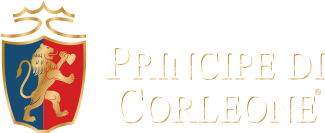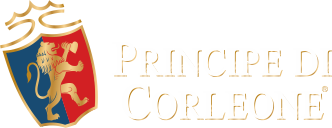Knowing the Wine
Serving Temperatur
There are some simple general rules that, if followed, will ensure that you don’t go too far wrong. White wines should be served chilled (6-10°C), whereas red wines should be served at room temperature (16-20°C). Rosé wines should be served at half-way between the two (10-16°C). In addition, it is essential to differentiate between sparkling and still wines: the former prefer lower temperatures than the latter. The more body the wine has, the higher the serving temperature should be. White wines with real body and structure should not be consumed cold, only slightly chilled.
Choosing the Glass
To appreciate a good wine, the choice of glass is fundamental. A good glass should favour the decantation of the wine and the concentration of the aromas. As such, the glass will generally be wider at the base, becoming narrower towards the brim. Colourless thin glass or crystal should be used to facilitate the visual examination of the content. The ideal shape depends on the type of wine:
TULIP-SHAPED: light white wines
RHINE: well-structured white wines
SMALL BALLOON: light-bodied red wines
BURGUNDY: full-bodied red wines
LARGE BALLOON: full-bodied, aged red wines
FLÛTE: dry sparkling wines
GOBLET: sweet sparkling wines
Visual Analysis
Visual analysis begins once you have filled one-third of the glass with wine. The glass should be held by the stem and brought into the field of vision at an angle of 45°, preferably against a light background. The following elements should be examined:
- clarity , or the absence of suspended particles greater clarity indicates greater stability and better health;
- the tonality (or chromatic quality) of the colour in white wines, the colour ranges from paper-white to greenish-yellow, straw-yellow, gold and amber; in rosé wines, it ranges from pale pink to light pink to cherry red; and in red wines, it ranges from ruby-red to purple to garnet, all the way to orange;
- the intensity (or saturation) meaning the level of concentration of the specific tonality
- the reflections are described , in the same terms as the tonality (greenish-yellow, straw-yellow, golden, amber, violet, garnet, etc.), although reference is also made to the undertones visible at the rim of the glass, which are most easily observed by tilting it; the reflections are useful in revealing the evolution of the wine
- last but not least, for sparkling wines and spumantes, it is important to evaluate the effervescence resulting from the carbon dioxide that is released when the wine is poured, creating the bubbles or perlag
The Chromatic scale of Wines
There are numerous variables that affect the colour of a given wine: the grape type, the characteristics of the soil, the vintage, the degree of ripeness, the vinification, the ageing process and the age. The colour is the first indicator that is taken into account when evaluating a wine, and it should be measured both in and of itself and in relation to the other aspects involved in carrying out a visual examination.
WHITE WINES
- Greenish-yellow; This is a pale yellow with greenish tints that tend to diminish over time. It characterises young, fresh wines, and wines that are harvested relatively early.
- Straw-yellow; This is the most commonly found version of the light yellow colour, and can vary significantly depending on the intensity (becoming more or less loaded).
- Golden-yellow; This is a bright yellow, which characterises wines made from particular grape types.
- Amber-yellow; This is the typical colour of certain passito (dried-grape) wines, liqueur wines and, in general, wines made using extremely ripe grapes.
ROSÉ WINES
- Faint pink
This colour is similar to that of rose petals or peach blossom. - Cherry-red
This is a relatively bright red colour. - Light pink
This pink tends towards red, without reaching the intensity of red wines per se. - Onion skin
A bright pink, loaded with reflections that tend towards orange.
VINI ROSSI
- Purple
This is an intense red, with violet reflections, that often characterises young wines. - Ruby-red
This is the most common shade for red wines: a dark red that is reminiscent of rubies. Its presence indicates that the wine should be consumed when relatively young. - Garnet
A colour that tends towards blood red. The presence of this colour is the first sign of the maturity of the wine: garnet undertones indicate that the wine has been aged for at least a couple of years and has developed satisfactorily. Certain wines – particularly those made from Pinot Nero and Nebbiolo grapes – may display garnet undertones even when still young. - Orange
Usually, orange undertones recall the colour of brick. This shade is the typical indicator that the wine has been aged for some time, and it therefore often characterises great wines, which reach their peak over many years. By contrast, orange undertones can also indicate that a given wine does not have great ageing potential and has responded poorly to ageing.
SECONDARY AROMAS
TERTIARY AROMAS
White wines normally offer up the fragrance of white-skinned fruits, whereas red wines normally release aromas that are reminiscent of red-skinned fruits
Apricot, pineapple, banana, cherry, strawberry, blackcurrant, raspberry, mulberry, quince, plum, citrus fruits and exotic fruits.
- Dried-fruit aromas
These aromas are usually found in more complex wines.
Fragrances include dried fig, almond, walnut, prune, sultana and jam.
- Vegetable Aromas
These aromas are found in great wines.
Grass, ferns, cut hay, limoncello, sage, dead leaves, walnut skin, green pepper, mushroom, truffle, musk and hummus
- Spicy-aromatic aromas
With a few notable exceptions, these aromas are usually found in complex wines.
Aniseed, cinnamon, cloves, fennel, liquorice, nutmeg, laurel, thyme, basil, lavender, ginger, pepper and vanilla.
- Balsamic aromas
Balsamic aromas are usually found in great wines.
Noble wood resin, pine, incense and juniper.
- Woody aromas
These aromas come from the wood in which the wine has been aged.
Oak, acacia and cigar case.






